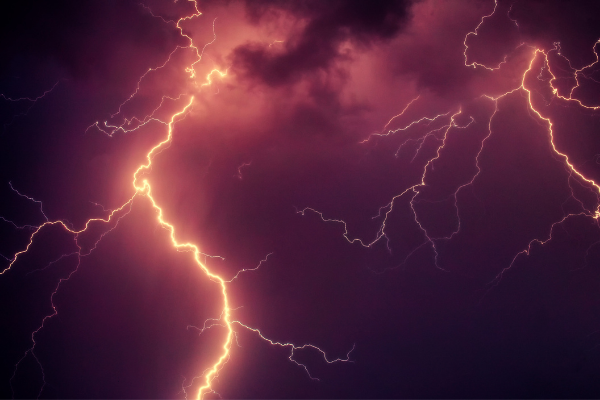Here are several tips you can share with your loved ones.
Before the Storm
- Talk to your family about what to do in the event of a severe storm or tornado. Point out the safest location to shelter, like a small, interior, windowless room on the lowest level of your home. Discuss the dangers of severe thunderstorms; lightning can strike 10 miles outside of a storm. Remember: when you hear the thunder roar, head indoors.
- Make a storm kit. It doesn’t have to be elaborate––having a few items on hand is better than nothing at all. Try to include items like water, non-perishable foods, a manual can opener, a First-Aid kit, flashlights and extra batteries, prescriptions, baby supplies, and pet supplies. Keep all the items in one place for easy access if the power goes out.
During the Storm
- Pay attention to local weather alerts––either on the TV, on your smartphone, or on weather radio––and understand the types of alerts. A thunderstorm or tornado watch means these events are possible and you should be prepared; a warning means a thunderstorm or tornado has been spotted in your area and it’s time to take action.
- If you find yourself in the path of a tornado, head to your safe place to shelter, and protect yourself by covering your head with your arms or materials like blankets and pillows.
- If you’re driving during a severe storm or tornado, do not try to outrun it. Pull over and cover your body with a coat or blanket if possible.
After the Storm
- If the power is out, conserve your phone battery as much as possible, limiting calls and texts to let others know you are safe or for emergencies only.
- Stay off the roads if trees, power lines or utility poles are down. Lines and equipment could still be energized, posing life-threatening risks to anyone who gets too close.
- Wear appropriate gear if you’re cleaning up storm debris on your property. Thick-soled shoes, long pants and work gloves will help protect you from sharp or dangerous debris left behind.

